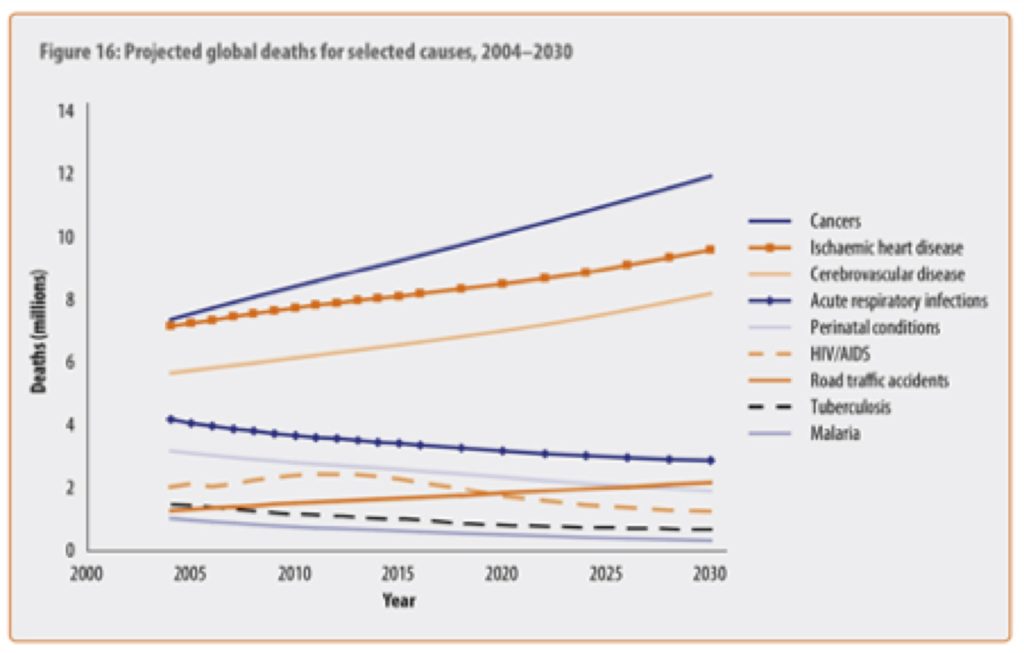
Infectious diseases have been the leading cause of human morbidity and mortality throughout history. Today, however, the burden of infectious diseases has greatly diminished in wealthier countries (though community-acquired pneumonia and occasionally influenza continue to cause significant mortality). In developing nations infectious diseases remain the leading causes of both death and DALYs lost, especially among children and young adults.
But as nations develop in terms of education and economy, a predictable epidemiologic transition occurs from a predominance of infectious diseases toward chronic non-infectious, non-communicable diseases. For example, today atherosclerotic coronary artery disease has become among the top cause of DALYs lost in multiple developing nations. Leading risk factors for the development of arteriosclerotic disease in these nations include hypertension, diabetes mellitus, tobacco abuse, and unhealthy diet—just as in wealthier nations.
What are the implications of the emerging chronic non-infectious diseases for health leaders? Consider these priorities:
• Training: Our health profession learners must become equipped with concepts and skills that emphasize the increasing priority of CNIDs.
• Resources: Our health services must allocate increased resources toward preventing and managing CNIDs, while not compromising continued attention toward control of long-standing infectious diseases—a difficult balance.
• Policy: Control of some CNID risk factors can be effectively implemented through public health education, such as the importance of hypertension screening and the importance of economic policy (like taxation on tobacco products).
• Research: Monitoring of CNID status and effectiveness of interventions will provide data to reliably guide future interventions.
Armed with these updated priorities, health leaders will be prepared to most effectively address the new realities amid which we serve.
